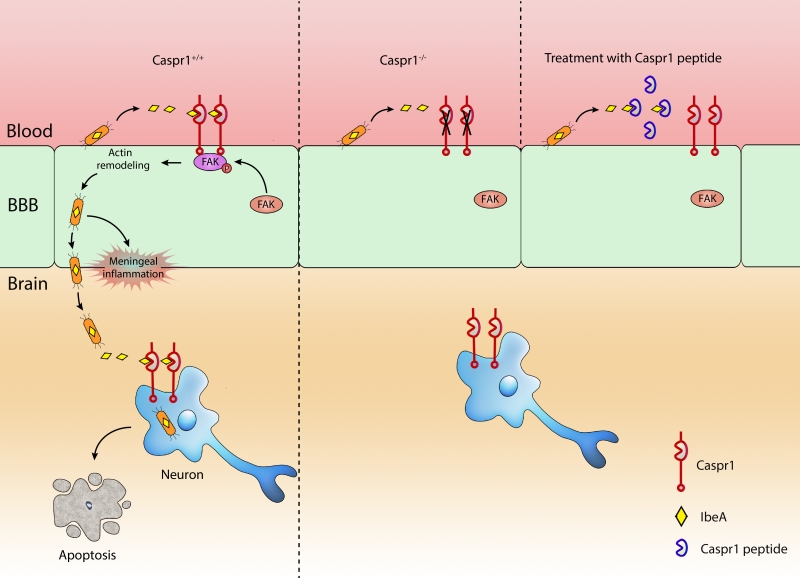Back to article: Escherichia coli hijack Caspr1 receptor to invade cerebral vascular and neuronal hosts
FIGURE 1: Bacterial IbeA interacts with host Caspr1 to facilitate development of meningitis. The virulence factor IbeA is secreted from E. coli upon contact with brain endothelium during bacteremia. The soluble IbeA binds with luminal Caspr1 to activate FAK signaling. Then the E. coli are internalized into brain endothelial cells and penetrate through the BBB leading to meningeal inflammation. The penetrated E. coli outside the microvessels in the brain parenchyma can invade neurons leading to apoptosis, dependent on IbeA-Caspr1 interaction. When Caspr1 was deleted by genetic knockout or blocked with Caspr1 peptide specifically bound with IbeA, the penetration of E. coli through the BBB was effectively prevented due to attenuated IbeA-Caspr1 interactions.

